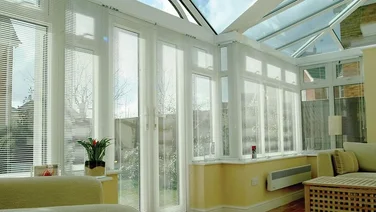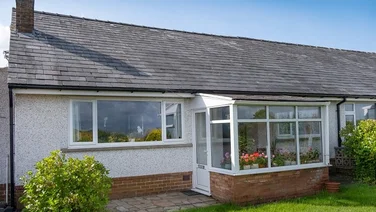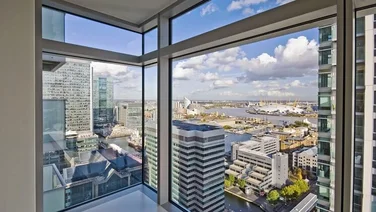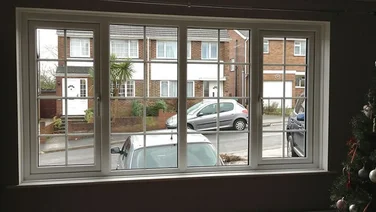- Including installation, skylight costs start from around £600
- It takes one or two days to install a skylight or rooflight
- Some skylights, such as Velux skylights, come with no-leak guarantees
Natural light is something that you never truly appreciate until youve got it, and one of the best ways to increase the level of natural light in your home is by installing a skylight window or rooflight.
Not only do they look fantastic, making any room feel more spacious and inviting, theyre also easy to install, environmentally friendly and will make your property more attractive to prospective buyers, so theyre well worth the investment.
In this guide, well give you all the information youll need about skylights and rooflights, including how they can save you money, how much they cost, the different types, and things to think about before buying one.
Read on to find out more.

What are the main benefits of a skylight?
The main benefits of skylights and rooflights are as follows:
- Youll save on energy costs if done properly, skylights and roof lights will reduce how much energy you use, as long as their U-Value is low (more on that later).
- Natural light the natural light that skylights and rooflights let in means you dont have to turn lights on as often. Even in darker winter months, theres more than enough natural light during the day to illuminate a space with a skylight.
- Fresh air skylights allow fresh air to flow into a room when opened or even when closed, through their vents. In the summer, this means you can save money by not having to turn on electric fans or air conditioning units.
- Ventilation when cooking, drying clothes, or using the bathroom, a lot of moisture can build up which leads to condensation, mould and mildew. Opening up your skylight or rooflight helps prevent this by allowing cooler, dry air from outside to replace the warm air inside.
What is the U-Value?
The U-Value in skylights and rooflights is a measure of how well they prevent heat from passing through. This means more heat kept in during winter, and less heat entering the home in summer months.
A U-Value is measured in watts per square metre kelvin (W/m²K). The lower the U-Value, the better the material is at keeping heat in.
The ideal U-Value for rooflights and skylights is typically anything below 1.6 W/m²K. This is a great value for ensuring strong insulation, whichll mean a more comfortable indoor environment, better energy efficiency, and lower heating and cooling costs.
What are the other benefits of skylights?
Skylights and rooflights are great for improving your mood, thanks to the simple fact that they flood rooms with natural light. Its been proven that natural light makes us feel better leading to increased happiness, productivity, and a feeling of wellbeing.
Theyre convenient too, because they grant you safe access to your roof in case you need to remove leaves or carry out simple maintenance.
Also, skylights and rooflights can make your home more appealing to buyers, as they offer more natural light than a similar property that doesnt have them installed.
How much does a skylight cost to install?
Based on the figures provided by the installers we spoke to, prices for a fully-installed skylight or rooflight start from around £600.
These costs will depend on the size and type of skylight that you choose, where you want it installed and how accessible that is. The more inaccessible the installation, the higher the labour costs.
Take a look at the table below for a rough guide:
| Job | Estimated Cost |
|---|---|
| Small skylight installation | £600-£1200 |
| Large skylight installation | £1200-£2000 |
| Small roof dome installation | £600-£900 |
| Roof terrace installation | £6000-£12000 |
| Electric top hung installation | £1600-£2000 |
Are skylight/rooflight installers expensive?
A straightforward installation for a skylight or rooflight will cost between £500-£800 on average, as it is usually 1-2 days work for 2 people. The more bespoke your installation requirements are, the more you will be likely to pay.
The majority of the cost of a skylight installation will be the window itself, which will depend on the type of window you have specified.
For example, windows with thicker glass panels with special coatings and noble gases between the panes will offer better insulation and security, and will typically be more expensive.
How long does it take to get a skylight/rooflight fitted?
How long it takes to install your skylight or rooflight will depend on a number of factors, including the size and type of window you are having installed, the type of roof you have (flat or pitched) and how easy it is to access the roof where you are having it installed.
- Installation the actual installation typically takes onetwo days, and involves cutting a hole in your roof for the skylight/rooflight, making sure its sealed with flashings to prevent leaks, securing the skylight/rooflight in place.
- Interior finishes interior finishes are applied once the window is installed. This involves creating a visually appealing, watertight connection between the skylight/rooflight, and the interior ceiling. How long this takes again depends on the complexity of the project, but expect roughly onetwo days.
- Painting and finishing touches once the interior finishes are completed, the final details are ready to be applied. This generally involves painting around the skylight/rooflight, trimming excess material, and checking for any gaps that might let unwanted air in.

Which skylight should I choose?
Deciding which skylight to choose depends on a range of factors. First, you need to think about the function of the room. Is it an office? If so, you might want a skylight/rooflight that comes with a darkening feature, to minimise screen glare.
For bedrooms, what better way to wake up than to a big skylight letting loads of natural light in?
That said, you might want to fit one with a black-out blind so that you dont get woken up at 5am in the morning when the sun starts streaming in during the summer months.
Most manufacturers offer a range of pull-down or electric blinds for your skylight.
Your roof type is also important, as itll dictate whether you get a skylight or a rooflight.
Pitched roofs roofs with a slope greater than 15° will typically need a skylight, as rooflights are best suited for flat roofs. Ask your installer about the best skylight for a pitched roof.
Think about roof direction as well, because thisll impact what kind of sunlight you get. As a general rule:
- North-facing roof consistent light throughout the day
- South-facing roof direct sunlight, bringing in more warmth
- East-facing roof morning sun, great for people who want to be woken by natural light
- West-facing roof ideal for letting in a warm afternoon sun
How much room you have will affect the size of the skylight or rooflight. As a rule of thumb, a skylight shouldnt be more than 5% of the floor area in rooms with lots of windows, and no more than 15% of a room’s total floor area for spaces with limited windows.
Finally, consider the U-Value. As we mentioned earlier, the lower the U-Value, the better a skylight/rooflight is at keeping heat inside your home. Try to go for skylights/rooflights with a U-Value below 1.6 W/m²K. This will increase what you spend, but will save you money on energy bills in the long run.
What types of skylight/rooflight are there?
The terms skylight, rooflight and roof window are often used interchangeably as manufacturers look to attract people using all three search terms, which isnt particularly helpful.
The difference between the three depends on who you ask.
A skylight tends to refer to a roof window you can open and close, that is installed in a traditional pitched roof where it will sit a few centimetres proud of traditional tiles, whereas a rooflight is more often a glazed unit installed on a flat roof.
This is not a hard and fast rule as you can have roof windows that open installed on flat roofs, and rooflights that dont open installed on pitched roofs.
The important thing to note is that through the wonders of modern glazing technology, the chances are there will be a window (opening or closing) that you can install in your home that will match your requirements.
The type of skylight or rooflight you choose depends on things such as size, your budget, whether you have a flat or pitched roof, and where youre installing the window in your home.
Heres a rough guide to the types of skylights and rooflights available:
Roof dome these are glass domes that are typically smaller in surface area than flat skylights but owing to their dome structure, they let a similar amount of light in. Roof domes are best suited to flat roofs.
Velux-style the Danish brand is the gold standard in this category and the word Velux has become synonymous with the words skylight, rooflight and roof window. The company has a huge range of mostly rectangular-shaped roof windows that can be opened (electronically or manually), and are designed with pitched roofs in mind.
Pitched skylights a great choice if you have a modern home and want a contemporary, unobtrusive way to let in natural light. Pitched skylights are typically fixed and cant be opened for ventilation.
Fixed flat rooflight if you want the lowest maintenance, a fixed flat rooflight is a great choice. They cant be opened, but theyll still provide lots of natural light, reduced energy bills, and heat insulation. They will usually be installed to sit proud of the roof to allow for water to run off.
Pyramid light the pyramidal shape of these rooflights make them ideal for letting in sunlight at different times of the day, and are ideal for flooding a room with natural light.
What do I need to be aware of when fitting a skylight/rooflight?
There are several factors to be aware of when fitting a skylight/rooflight. First off, youll want to think about where you want to install the skylight/rooflight, as the roof type and the room underneath can affect what type of skylight/rooflight you can get.
If you have a truss roof for example, the trusses on your roof could actually affect how wide the skylight you have can be. If you have to cut into the trusses to fit the rooflight in your desired location, that truss will need structural support and this will require a structural engineer, and therefore add costs to your project.
In this situation, you might consider adding an additional skylight so that you have two that fit between the trusses in your desired location, or you might want to think about installing them elsewhere in the room.
Another issue youll want to be aware of is potential issues after installation. Most of the time this involves things like poorly applied sealant, which can cause leaks. If you opt for Velux skylights, youll benefit from the included no-leak guarantee.
Finally, its worth being aware that you might need to have scaffolding to install a skylight or rooflight, and that some installations might require planning permission. Generally speaking this is only for listed/historical buildings, but its still worth checking just in case.
Can I stop my skylights/rooflights from getting condensation?
Condensation on skylights can lead to mould or mildew around the frame. You might also get peeling or bubbling paint around the skylight or rooflight, or even water falling into the room. It is possible to prevent condensation by following these steps: .
- Keep skylight vents open – many skylights (in particular those from Velux) come with a vent opening, which helps excess moisture escape to the outside.
- Look for skylights/rooflights with Low-E insulated glass, which keeps the interior window pane warmer to help prevent condensation.
- Try to keep the air flowing in your house to prevent condensation, if you can.
- Keep houseplants away from skylights/rooflights, as they emit carbon dioxide which can cause condensation.
- For general maintenance, ask your installer how to clean skylight windows from the inside.

How do I know its time to replace my skylight?
Most skylights and rooflights last around 12 years. Velux skylights, on the other hand, can last 2030 years a good deal of time, but not forever.
Knowing when to replace your skylight is important, because broken or inefficient skylights and rooflights can cause a range of problems.
Keep an eye out for some of these signs of wear and tear:
- Stains stains appearing around your skylight mean it could be letting water in. Be aware of any light yellow or brown marks appearing around the edges of your skylight/rooflight. In a worst-case scenario, the excess moisture can appear black, which means mould has developed. This is potentially harmful to health.
- Discolouration as your skylights and rooflights age, the window will start to become discoloured and wont be as clear as when it was first installed. You might be able to clear this discolouration, but often its just a part of the skylight ageing and a clear sign it needs replacing.
- Condensation as with double and triple glazing, condensation in your skylights and rooflights is a sign that the sealant is starting to fail. Sometimes you can repair and reseal the window, but its usually only a temporary solution.
- Increasing energy bills if you start to notice your energy bills increasing, it might be a sign that more heat is escaping through your old skylight.
Next steps
Skylights and rooflights not only look great, they increase natural light, make your home more energy efficient, and help funnel more fresh air into your home.
Hopefully this guide on skylights and rooflights has given you the information you need to go ahead and start contacting installers to get an accurate quote for your needs.





